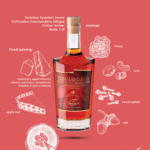 As hoteliers and consultants, we respond to the question of profitability spontaneously. In Asia, most large format hotels have a much more equal distribution of rooms and F&B revenue. In some cases, F&B can be 50% of the total revenue. The question here is – does F&B have a larger scope perhaps in terms of profitability? My opinion? Yes!
As hoteliers and consultants, we respond to the question of profitability spontaneously. In Asia, most large format hotels have a much more equal distribution of rooms and F&B revenue. In some cases, F&B can be 50% of the total revenue. The question here is – does F&B have a larger scope perhaps in terms of profitability? My opinion? Yes!
However, a lot of this is seen as MICE revenue or banquet related, which itself is mix of corporate conference revenue and revenue from social events, mainly weddings. While weddings undeniably represent a lucrative segment for hotel F&B earnings, focusing solely on this demographic can overlook significant profit-earning potential in other areas. Having said that, weddings do have true revenue and profitability potential if you can do it really well. Brands like Marriott and IHCL have really taken the game a notch up and gone all the way till the end by launching “Shaadi by Marriott” and “Timeless Weddings by Taj”. However, expanding beyond weddings will allow hotels to mitigate risks associated with seasonality and market fluctuations, fostering long-term sustainability and growth in their F&B operations, all flowing through to the GOP of the hotel.
Approximately one half or say a quarter of F&B revenue arises from restaurant sales. In fact, it would be safe to assume that many times restaurants in the hotels can be the reason why people visit the hotel and not just vice-versa the rooms.
In the dynamic landscape of the hospitality industry, F&B operations stand out as a vital component contributing significantly to a hotel’s financial success. From fine dining restaurants to casual cafes, bars, and room service, F&B services represent not only a substantial revenue generator but also a critical element in guest satisfaction and overall experience. While this sounds like music to the ears of hotel owners (especially new hotel owners, who may be swayed by the many stories of successful F&B outlets), a key item often escapes attention. Very few talk F&B profitability. The main focus, especially by hotel brands themselves, is on revenue generated, not profitability.
Add to this another dimension – that restaurants generally can be expensive propositions for any hotel. Kitchens are often oversized as space is generally not a constraint. Afterall, who is counting the square feet of rent expense? No one – because there is no rent to pay. Also, the interior finishes can often be lavish. After all, this is a public area, so a little bit of extravagance is allowed. So, it’s a field day for designers, kitchen consultants and of course plays in beautifully into the ROE of the project. By the way ROE here equals Return on Ego.
Badhai ho!
A fun fact: For many hotels, F&B revenue represents 30–50% of their total revenue and the focus still remains on weddings as a segment with restaurants playing second fiddle.
Unfortunately, the typical hotel F&B managers’ focus for their restaurants remains only on:
- Top line
- Number of covers
- Average cheque
This is dangerous in many ways because this is only the tip of the proverbial iceberg. The speciality restaurant manager does not panic when the 80 cover restaurant only does 6-10 covers for a weekday lunch meal period. Even if this happens on a daily basis or more frequently than not, the manager isn’t worried about his cost of raw materials, overheads and team salaries and that is a red flag right there. Just imagine the alternate scenario if this restaurant had instead been outsourced or never built. Or if rent had to be paid for the area on a square foot basis, there was a utility bill to be covered or maintenance or license fees. Guess what – the same F&B manager would have been long fired.
However, to be fair it’s not entirely his/her fault. Hotel brands are just not doing enough to train their staff on this front mainly because they too don’t see it as a red flag. The restaurant world is fast paced and competitive where there is only survival of the fittest. You have to provide a memorable culinary experience, be active on social media and have the right set of influencers recommend the restaurant. Followers, ratings, social media presence and awards are all big buzz words without which you don’t stand a chance.
The real deal: stand alone restaurants
Running a stand-alone restaurant is tough due to various reasons. Firstly, unlike restaurants in big hotels, stand-alone ones lack the support and resources needed to handle financial ups and downs and invest in important areas like equipment and advertising. Costs such as rent, utilities, and upkeep are a big part of the budget, so managing expenses well is crucial to staying profitable. Also, there’s a lot of competition in the food industry, so stand-alone restaurants must be creative, offer something unique, and always deliver great quality to keep customers coming back. Finding and keeping good staff can be hard too. Plus, dealing with rules and regulations, like getting licenses and meeting health and safety standards, adds more challenges. Overall, it takes a lot of flexibility and determination to make a stand-alone restaurant successful amidst all these obstacles.
So how does one improve F&B profitability?
Challenge No. 1: Brands insisting on multiple restaurants
Brand standards have been a bone of contention and while that needs separate focus, the current focus is on brands insisting on multiple restaurants. While this approach can enhance the overall guest experience by offering diverse culinary options under one roof, it also poses logistical and operational hurdles. Hotel brands often view in-house restaurants as integral components of their identity and guest offerings, preferring to maintain control over the dining experience from concept to execution. This insistence on internal management can limit flexibility and creativity, constraining the hotel’s ability to adapt to changing market trends and local preferences. Additionally, the overhead costs associated with operating multiple restaurants in-house, including staffing, equipment, and marketing, can strain profitability margins.
Challenge No.2: Hotel Brands not outsourcing restaurants
Introducing the concept of outsourcing restaurants within hotel brands opens up a world of culinary possibilities. This concept is widely accepted internationally; however, in Asia, this is still a new concept and this method of optimizing efficiency has not been explored in totality. The advantages are many:
- Outsourcing restaurants brings fresh perspectives and diverse culinary experiences to hotels.
- Collaboration with external culinary experts or renowned restaurant brands enhances the authenticity and quality of the dining experience.
- Hotels can tap into specialized expertise and established reputations of external partners.
- Outsourcing alleviates the burden of staffing, training, and operational management on the hotel.
- Financially, outsourcing mitigates risks associated with fluctuating demand and reduces upfront investment costs.
- Overall, embracing outsourcing empowers hotels to deliver exceptional dining experiences, driving customer satisfaction and loyalty.
- We recommend that right from design stage plan to outsource at least one outlet which can be provided a separate entrance if required.
Challenge No.3: Unit Economics
General Managers and Operations (Restaurants / F&B) Heads must shift their mindset to view their units as independent P&L entities. By adopting this approach, they would be able to understand the financial viability and sustainability of each restaurant. Empowering their teams to take ownership of financial performance will higher foster accountability, drive profitability, encourage strategic decision-making, cost-consciousness, and innovation tailored to the specific needs and opportunities of the unit. Look, if you are really keen to see if your restaurant is profitable then do the following apart from tracking Top line, Number of covers and Average cheque.
- Add 12–14% of top line as rent (most independents need to actually pay a minimum fixed amount too)
- Take food cost at a conservative 25–30%
- Take payroll to be 18–22%
- Utilities and maintenance at say 5–7%
- Add some costs for marketing, influencers and some salt & pepper for good measure.
If you are still surviving then kudos to you as you are doing a great job. If not then perhaps it’s time to be fired and polish that CV!
Final thoughts
Restaurants within hotels holds vast, untapped potential. These dining establishments possess the unique advantage of a built-in customer base and access to resources, yet they often remain underutilized. The question that lingers is whether these restaurants are willing to break free from conventional norms and take the leap of faith required to fully realize their capabilities.
If you are an owner and are suddenly worried then reach out and we can perhaps help. Create a speakeasy, I say – but then that’s another article, another day.

























